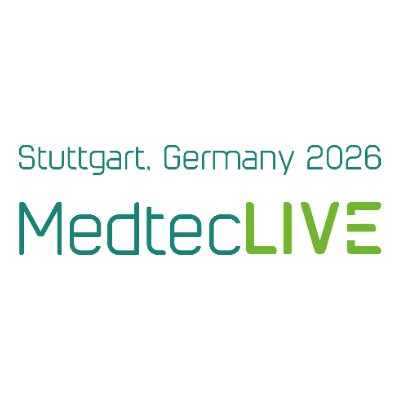From Burden to Breakthrough: How Quality Management Becomes Your Competitive Edge
Learn practical strategies for converting compliance requirements into business opportunities, from systematic customer needs analysis to AI-powered process optimization.
Many organizations view quality management as a regulatory burden that drains resources and slows innovation. However, forward-thinking companies are discovering that quality management systems can become a powerful source of competitive advantage, as Steffen Eschinger presented at the BME Buyers Day at MedtecLIVE 2024. Through strategic implementation and a shift in mindset, these requirements can drive innovation, improve customer satisfaction, and create market differentiation.
Transforming Compliance into Competitive Advantage
Quality management requirements, particularly in regulated industries like medical devices, often appear as obstacles to overcome. However, as Steffen Eschinger, an experienced interim manager in medical technology, demonstrates, these requirements can become powerful market differentiators. For example, when working with a medical device manufacturer, his team transformed mandatory post-market surveillance into a strategic advantage by using customer feedback to optimize product features, leading to significant market share gains.
The key to this transformation lies in shifting perspective from mere compliance to value creation. Instead of viewing quality management as a checkbox exercise, successful organizations integrate these requirements into their core business strategy. This includes using regulatory documentation requirements to drive process improvements and leveraging compliance activities to gather market intelligence.
Companies that excel at this transformation often focus on three key areas:
● Converting regulatory documentation into valuable business insights
● Using compliance requirements to drive process optimization
● Leveraging quality management systems to improve customer experience
The Power of Customer-First Quality Management
Customer engagement represents a critical aspect of quality management that many organizations underutilize. Rather than relying on impersonal surveys and generic feedback forms distributed through platforms like Survey Monkey, successful companies implement systematic customer needs analysis through direct engagement. As Eschinger notes from his experience, "In a clinical setting, you won't find doctors sitting around waiting to fill out questionnaires. Such surveys typically end up in the trash, and emails go straight to spam."
A compelling example comes from his time as CEO of a small cannula manufacturer in Switzerland. While larger competitors relied on standard sales approaches for their 55cm cannulas, his team took a different approach: they brought their cardiac surgeon directly to ARHZ surgeons, enabling peer-to-peer discussions. This systematic approach to customer needs analysis, combined with lighthouse projects, led to a significant increase in market share. As Eschinger emphasizes, "We achieved massive sales increases in the market, but this required systematic customer needs analysis and subsequent post-market surveillance."
Effective customer-first quality management requires going beyond traditional feedback mechanisms. This means sending technical experts and decision-makers into the field to observe product usage firsthand and understand customer challenges in their natural environment. For example, when working with hospital systems, successful companies engage directly with healthcare professionals to understand their workflow and challenges.
The implementation of customer-centric quality processes requires three fundamental elements:
● Systematic collection and analysis of customer feedback
● Direct observation of product usage in real environments
● Integration of customer insights into product development and service delivery
Mastering Resource Planning & Skill Development
Resource planning and skill development form the backbone of effective quality management, particularly under ISO 13485 Chapter 6 requirements. As Eschinger emphasizes, many companies treat this as a mere pre-audit exercise, updating data just weeks before inspections rather than maintaining an ongoing process. However, the standard requires monthly comparison of demand versus supply, especially crucial for medical device development and hospital supply management.
He shares a critical insight from his experience: "When our resource planning was truly robust, we achieved two outcomes: either we secured additional resources when budget and market acceptance allowed, or we postponed less attractive projects. Sometimes we even withdrew medical products from the market because we couldn't maintain them properly." This approach led to higher quality standards for developed products, improved employee satisfaction due to manageable workloads, and reduced risk of critical failures that could lead to field safety notices or patient harm.
Effective resource planning requires regular assessment of demand versus available capabilities. This includes monthly reviews of resource requirements against current capacity, with clear escalation paths to management when gaps are identified. Companies that excel in this area typically maintain flexible resource pools and invest continuously in skill development.
The implementation of effective skill management systems requires:
● Regular assessment of current versus required capabilities
● Practical training programs focused on real-world application
● Continuous monitoring and adjustment of resource allocation
Revolutionizing Quality Through Digital Innovation
Digital transformation is revolutionizing quality management through tools like artificial intelligence and automation. Eschinger shares a compelling real-world example of a 30-person electronics company that was struggling with processing 1,300 order confirmations monthly, some up to 24 pages long, requiring 1.5 full-time employees just for verification. Using ChatGPT-4, they developed a semi-automated process that could read PDF files, convert them to a standardized format, and generate structured data for comparison. This simple implementation reduced the workload by 50% without requiring specialized developers.
Another practical example involved a client needing to organize 17,000 technical documentation files. Instead of hiring an expensive IT consultant, they utilized ChatGPT to create a directory overview system. What initially would have taken days of consultant time was accomplished in just two days, and with experience, the process now takes only ten minutes.
Modern quality management systems increasingly incorporate:
● Edge computing for real-time quality monitoring
● Digital twins for process optimization
● AI-powered predictive quality management
The key to successful digital transformation lies in starting small and focusing on practical applications that deliver immediate value. For example, using AI tools for document processing or implementing automated quality checks can provide quick wins while building momentum for larger transformations.
Conclusion
Quality management can evolve from a regulatory burden into a powerful competitive advantage through strategic implementation and mindset shift. Success requires systematic customer engagement, effective resource planning, and smart adoption of digital technologies. Organizations that make this transformation not only achieve compliance but create sustainable market advantages through superior quality management practices.
Editorial notice:
This article is based on the corresponding presentation during MedtecLIVE 2024 and was created with the support of AI. The supporting programme of MedtecLIVE 2026, which will take place from 5 to 7 May 2026 in Stuttgart, also offers numerous lectures. The trade fair brings together suppliers, providers from the development and production of medical technology, OEMs, distributors and other players in the medical technology community.


